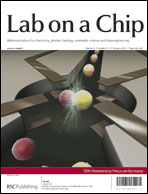Design of pressure-driven microfluidic networks using electric circuit analogy
Abstract
This article reviews the application of electric circuit methods for the analysis of pressure-driven microfluidic networks with an emphasis on concentration- and flow-dependent systems. The application of circuit methods to microfluidics is based on the analogous behaviour of hydraulic and electric circuits with correlations of pressure to voltage, volumetric flow rate to current, and hydraulic to electric resistance. Circuit analysis enables rapid predictions of pressure-driven laminar flow in microchannels and is very useful for designing complex microfluidic networks in advance of fabrication. This article provides a comprehensive overview of the physics of pressure-driven laminar flow, the formal analogy between electric and hydraulic circuits, applications of circuit theory to microfluidic network-based devices, recent development and applications of concentration- and flow-dependent microfluidic networks, and promising future applications. The lab-on-a-chip (LOC) and microfluidics community will gain insightful ideas and practical design strategies for developing unique microfluidic network-based devices to address a broad range of biological, chemical,


 Please wait while we load your content...
Please wait while we load your content...